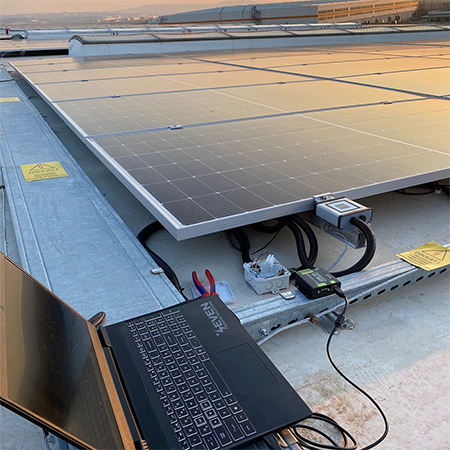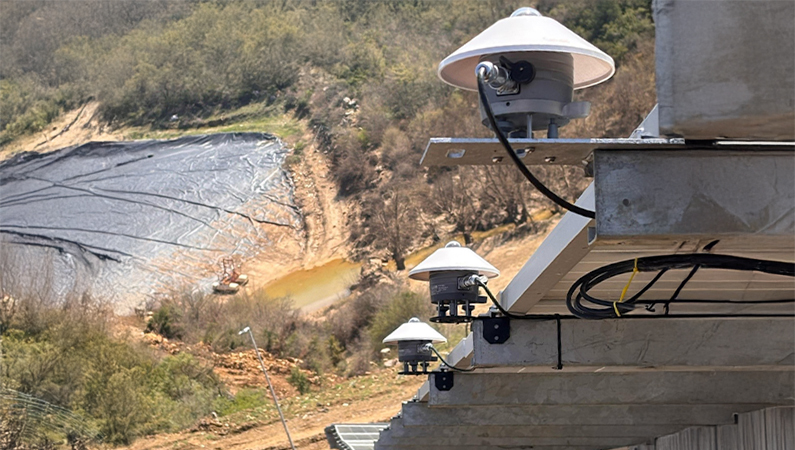While solar power plants (SPPs) stand out among renewable energy sources, accurate and instantaneous monitoring of environmental data is of great importance for high performance. In this context, the integration of weather observation sensors into SCADA systems is a critical process in terms of both monitoring and management.
In this article, we will explain how SEVEN sensors working with Modbus TCP/IP and Modbus RTU (RS485) protocols are integrated in SPP sites. This example SEVEN Thermopile Pyranometer integration will also be discussed step by step.
Weather Monitoring Sensors in SPPs
The production efficiency of SPPs is directly dependent on meteorological data such as solar radiation, temperature, wind speed/direction, humidity and dusting. Therefore, SEVEN weather observation sensors are the key components that enable data-driven decisions in SPP operation.
When this data is integrated into the SCADA system, all components in the field can be monitored in real time, alarm thresholds can be set and remote management can be provided.
What is SCADA System?
SCADA (Supervisory Control and Data Acquisition) systems provide remote control and monitoring in industrial plants. It receives data from many devices such as inverters, digital meters and weather sensors in SPPs and visualizes them on a central interface. SCADA has advantages such as real-time performance monitoring, event/failure recording and historical data analysis, remote access and centralized control.
Integration with Modbus TCP/IP and RTU
Modbus TCP/IP and Modbus RTU are different communication methods of the same protocol:
- Modbus RTU uses serial communication (RS-232/RS-485), data frames are compressed, using less bandwidth.
- Modbus TCP/IP works over Ethernet, is faster and provides access to remote devices over the network.
RTU communicates from the serial port, TCP/IP from the network cable
All SEVEN Sensor Solution sensors communicate with Modbus RTU. This communication protocol is widely used to integrate weather sensors into SCADA systems. In SPP, Modbus RTU offers advantages such as compatibility between manufacturer-independent devices, high-speed data transfer, easy installation and configuration, centralized management in IP-based networks, resistance to electrical interference and reliable communication over long distance.

As an example, Figure 2 shows how our 3S-IS Irradiance Sensor is connected to the computer interface via Modbus RTU RS485 connection method. You can easily control the data of SEVEN Sensors via computer with SEVEN configuration tool. For this you need any SEVEN Sensor with Modbus RTU output, RS485 converter, power supply and your computer.
SCADA Integration Steps:
1. Modbus TCP supported sensor selection
Devices that provide data such as irradiance, temperature, humidity, wind speed/direction, dust and offer Modbus RTU are preferred.
2. IP configuration
Each sensor is assigned a unique IP and introduced to the SCADA system.
3. Register address definition
The data map of the sensor is entered in the SCADA software. (Ex. 30002: Irradiance)
4. Real-time monitoring
In the SCADA interface, data can be visualized with graphics, threshold values can be determined.
Example Application: Modbus RTU RS485 Output Thermopile Pyranometer Integration
Thermopile pyranometers are used to measure solar radiation in SPPs. SEVEN 3S-TP-MB-A Thermopile Pyranometer works with Modbus RTU RS485 protocol. An integration process suitable for real field application is presented below.
Equipment needed;
- Pyranometer with Modbus RTU output
- RS485-Ethernet converter
- SCADA system (e.g. Siemens WinCC, Ignition, etc.)

Implementation Steps:
1. Connection Setup
Firstly, 24V supply is connected to the pyranometer with brown cable to power (+), white cable to power (-) and black cable to protective earth. Then the green cable A(+), yellow cable B(-) RS485 lines are connected to the respective inputs of the RS485-Ethernet converter and the pink cable to the signal ground. The converter joins the SCADA network via Ethernet.
2. Device Parameters Description
The baud rate (e.g. 9600), Modbus address (e.g. 01) and data format (8N1) of the device are set. The initial parameters for 3S-TP-MB-A are baud rate; 19200, ID;1, Data format is 8N1. You can download modbus map and user manual from our website “ https://www.sevensensor.com/download ”.
3. Register Map Usage
Our SEVEN Thermopile Pyranometer draws solar radiation data from the 30002 register. You can also look at other temperature, humidity, mV output registers from our modbus map. These addresses are configured in the SCADA system.
4. SCADA Configuration
The converter is introduced by entering IP and port information. The values coming from the device can be monitored instantly on trend graphs or digital indicators.
Things to Consider:
- Pay attention to the maximum number of devices on the RS485 line (1-247) and the number of devices as the maximum number of Modbus devices supported may be limited depending on the brand/model of the PLC.
- Data cable length and cable quality affect the reliability of communication. Therefore, do not splice or use any other cable to the cable provided by SEVEN Sensor Solution.
- The pyranometer must be installed in such a way that it is not affected by shadowing and tilt errors. For pyranometer installation, you can read the 3S-TP-MB-A User Manual
As Seven Sensor, we offer special solutions for SPP projects with Modbus TCP/IP and RS485 supported weather monitoring sensors. Our devices are resistant to harsh field conditions, have high compatibility with SCADA systems, provide low maintenance cost and long life advantage. All our products focus on fast integration and accurate data transmission. We also offer technical support and field application support specific to your projects. You can review all SEVEN sensors at ” https://www.sevensensor.com/products “.
